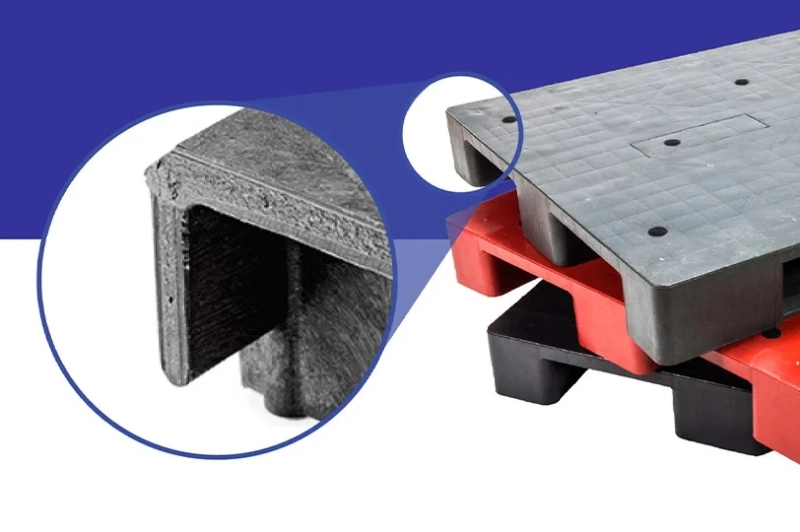Foam injection molding is pivotal in modern manufacturing, offering the capability to create intricate, lightweight, and often custom components. However, the road to a flawless product is not without its bumps. Here in this blog, we'll delve into the world of Foam Injection Molding, exploring the common errors that can arise in this process and providing effective solutions. So, let's navigate the foam injection molding errors together.
Common Foam Injection Molding Errors
Understanding the challenges you may encounter during foam injection molding is the first step toward solving them. Here are four frequent issues:
1. Voids: Voids, the silent troublemakers, are undesirable air pockets within the molded part that lead to structural weaknesses. They often result from improper venting, temperature imbalances, inadequate material flow, or contamination.
2. Sink Marks: Sink marks, those frustrating surface depressions, typically arise due to uneven cooling. This uneven cooling can result from varying wall thickness, incorrect injection speed, mold design issues, or material inconsistencies.
3. Warping: Warping causes the final product to take on a deformed shape due to uneven cooling and shrinking. It's usually triggered by inadequate temperature control, improper mold release agent usage, material imbalances, and high mold temperatures.
4. Flash: Flash occurs when excess material seeps out between mold seams, resulting in unwanted protrusions on the part's surface. Issues in mold alignment, excessive injection pressure, or worn-out tooling often cause it.
Causes of Foam Injection Molding Errors
To effectively troubleshoot these errors, you must understand their origins:
Temperature: Incorrect temperature settings can lead to voids and sink marks. Factors such as inadequate cooling or heating can be problematic. Therefore, ensuring consistent temperature throughout the molding process is crucial.
Pressure: Insufficient pressure control can result in voids and flash. Considering this, maintaining proper pressure levels throughout the entire Foam Injection Molding process is essential.
Material Issues: Using the wrong material type or mishandling materials can lead to warping, voids, and flash. Material contamination or inconsistency can also play a role. Therefore, selecting the right material and following proper handling procedures are vital for error prevention.
Tooling: Worn or misaligned tooling can lead to flash and sink marks. Tooling issues are often caused due to wear and tear or misalignment. Hence, ensuring that the mold and tooling are in excellent condition is essential.
Troubleshooting Methods
Now, let's explore practical solutions for these foam injection molding errors in more detail:
1. Voids: To address voids, you must optimize the mold temperature, reduce injection speed, incorporate venting techniques, and ensure material purity. Ensuring the mold is correctly vented is crucial to releasing trapped air and producing void-free parts.
2. Sink Marks: Solving sink marks requires improving mold design to ensure even cooling, adjusting the cooling time, optimizing injection speed, and ensuring uniform wall thickness. Mold design and process adjustments are critical to prevent such errors.
3. Warping: Warping can be mitigated by optimizing the cooling process, utilizing proper mold release agents, ensuring uniform wall thickness throughout the part, and verifying material consistency. Addressing each of these factors contributes to reducing warping-related defects.
4. Flash: To prevent flash, focus on maintaining accurate mold alignment, controlling injection pressure, and regularly inspecting and maintaining tooling. Proper mold alignment and pressure control are key to preventing flash issues.
Preventive Measures
Preventing errors is often the best strategy for successful Foam Injection Molding:
Implement a stringent process control system, regularly maintain and monitor your equipment, and utilize high-quality materials to minimize errors.
Conduct routine inspections to catch issues early, maintain a well-documented quality assurance process, and continuously improve your standard operating procedures. Regular equipment maintenance and operator training are integral to proactive error prevention.
Consider implementing quality control checks at various stages of production, including material inspection, mold preparation, and post-production inspections. It helps ensure issues are detected early and corrected before they become larger problems.
Advanced Troubleshooting Techniques
For more advanced troubleshooting and error prevention, consider the following:
Utilize simulation software to predict and address potential errors before production begins. This proactive approach can significantly reduce troubleshooting efforts during production. It allows for virtual testing and optimization of molding processes.
Incorporate infrared thermography to precisely monitor and control temperature, ensuring your Foam Injection Molding process remains consistent and defect-free. Infrared thermography is a non-invasive method for real-time temperature monitoring.
Final Recommendations
So basically, understanding and addressing foam injection molding errors is essential to maintain product quality and minimize waste. Implementing preventive measures, leveraging advanced techniques, and continually optimizing your processes can help enhance manufacturing efficiency and product quality.
As you navigate the world of Foam Injection Molding, remember that perfection often comes through experience and ongoing improvement. Stay updated on industry best practices and be proactive in your troubleshooting efforts. By following these guidelines, you'll master foam injection molding and ensure the success of your manufacturing endeavors.


